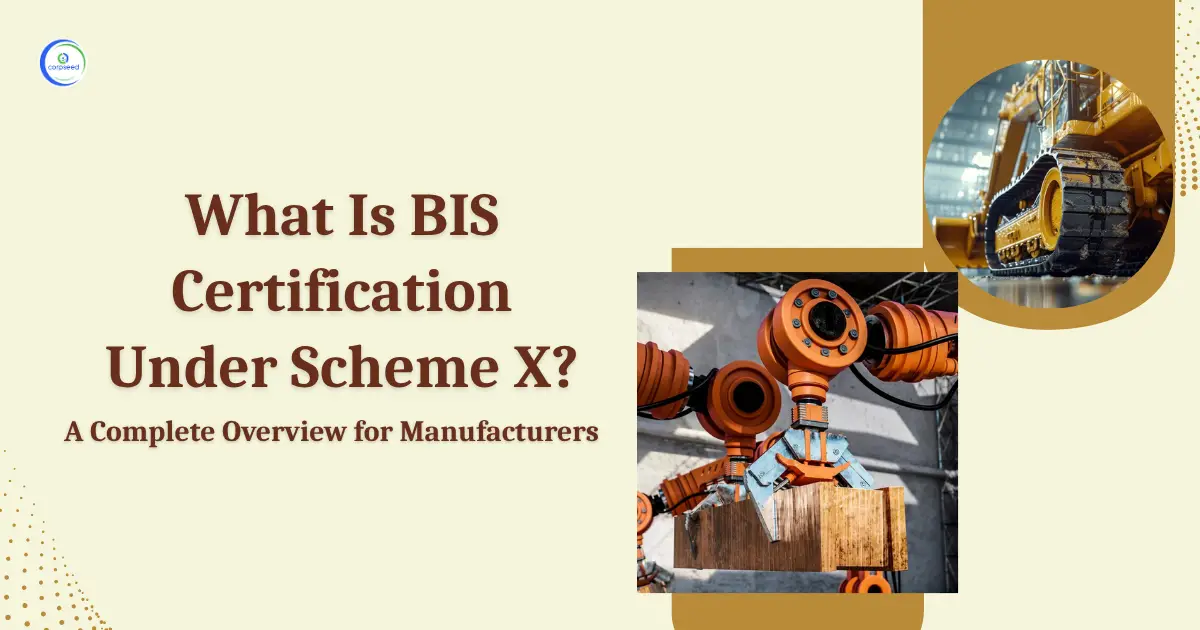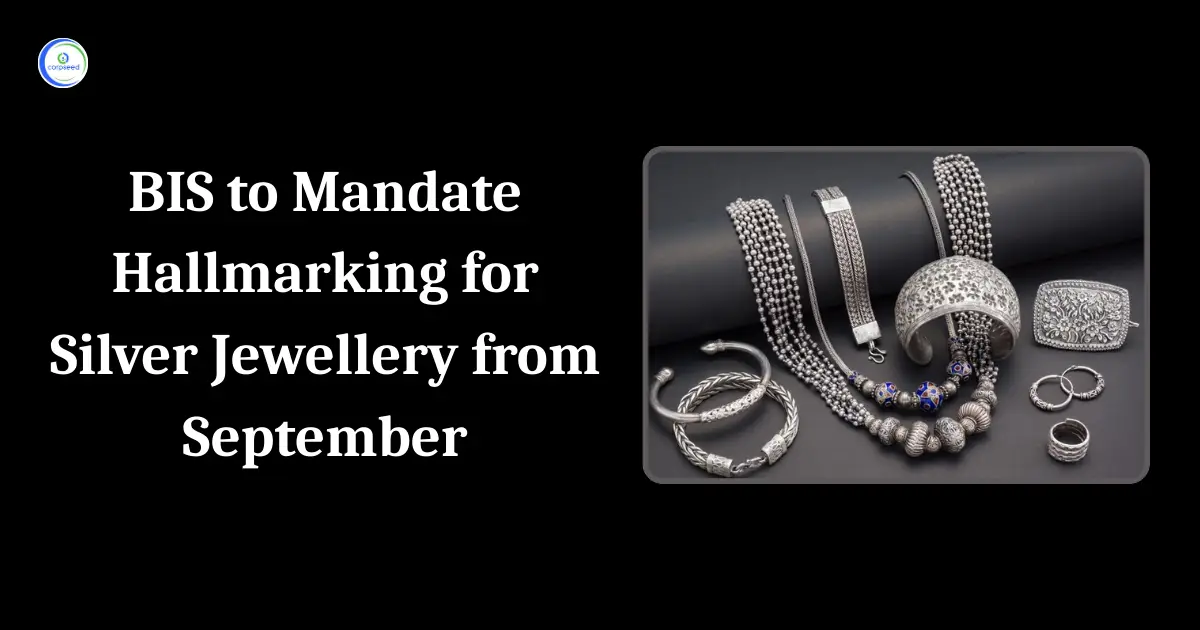The Bureau of Indian Standards (BIS) plays an important role in maintaining the quality and safety of products in India. Its standards ensure that products manufactured and sold in the country meet essential quality standards. Recently, there have been several revisions to Indian standards as part of ongoing efforts to enhance product quality, protect consumers and keep pace with global trends. These updates also affect the BIS registration and certification process, making it vital for businesses to stay informed.
Table of Contents
Understanding the Recent Amendments to Indian Standards
The Bureau of Indian Standards periodically reviews and updates Indian standards to align with technological advancements, safety concerns, and growing market requirements. The latest set of amendments, published in accordance with sub-rule (1) of Rule 15 of Bureau of Indian Standards Rules 2018 highlights the changes in existing standards in various industries.
These modifications are designed to enhance product quality, improve consumer safety and comply with international standards. Businesses holding BIS certification will require to review their products and processes to confirm compliance with the new requirements. In some cases, companies may need to upgrade their manufacturing methods, quality control systems, or raw materials in order to align with the updated standards.
--------------Blog Contact Form-------------
Tables: Established and Withdrawn Standards
To help businesses stay informed and navigate updates efficiently, below are the tables summarizing established and withdrawn Indian standards. These tables will help businesses identify which particular standards are affected, ensuring they take suitable action to maintain BIS registration and certification.
Established Standards
| Sl. No. | No., Year & Title of the Indian Standard | No. and Month/Year of the Amendment | Date of Establishment of the Amendment | Date till which the standard without the amendment as mentioned in column 3 shall remain in force |
| 1. | IS 16058 : 2024 Dunnage Pallets Made from Recycled Packaging Wastes for Warehousing Application — Specification (First Revision) | Amendment No. 1 May 2025 | 27 May 2025 | 26 November 2025 |
| 2. | IS 16481 : 2022 Textiles — Synthetic Micro Fibres for Use in Cement Based Matrix — Specification (First Revision) | Amendment No. 3 May 2025 | 27 May 2025 | 26 November 2025 |
| 3. | IS 15523 : 2018 Automotive Tyres — Precured Patches for Repairing Cross Ply/ Radial Tyres and Inner Tubes — Specification (First Revision) | Amendment No. 1 June 2025 | 02 June 2025 | 01 December 2025 |
| 4. | IS 15709 : 2018 Automotive Vehicles — Retreaded Pneumatic Tyres for Passenger Car — Specification (First Revision) | Amendment No. 1 June 2025 | 02 June 2025 | 01 December 2025 |
| 5. | IS 15753 : 2007 Automotive Tyres — Tyre Curing Bladder — Cold Process | Amendment No. 1 June 2025 | 02 June 2025 | 01 December 2025 |
Withdrawn Standards
| Sl. No. | No., Year & Title of the Indian Standards Established | Date of Establishment | No. , Year & Title of the Indian Standards to be Withdrawn, if any | Date of Withdrawal |
| 1. | IS 848 : 2025 Synthetic Resin Adhesives for Plywood (Phenolic, Aminoplastic and Bio-Materials Based) — Specification (Third Revision) | 27 May 2025 | IS 848 : 2006 Synthetic Resin Adhesives for Plywood (Phenolic and Aminoplastic) — Specification (Second Revision) | 27 November 2025 |
| 2. | IS 885 : 2025 ISO 1750 : 2023 Pesticides and Other Agrochemicals — Common Names (Third Revision) | 27 May 2025 | IS 885 : 1994 Common Names for Pesticides and Other Agrochemicals (Excluding Fertilizers) (Second Revision) | 27 November 2025 |
| 3. | IS 1200 (Part 2) : 2025 Method of Measurement of Building and Civil Engineering Works Part 2 Concrete Works (Fourth Revision) | 27 May 2025 | IS 1200 (Part II) – 1974 Method of Measurement of Building and Civil Engineering Works Part II Concrete Works (Third Revision) | 27 November 2025 |
| 4. | IS 1200 (Part 25) : 2025 Method of Measurement of Building and Civil Engineering Works Part 25 Tunnelling (Third Revision) | 27 May 2025 | IS 1200 (Part XXV) – 1971 Method of Measurement of Building and Civil Engineering Works Part XXV Tunnelling (Second Revision) | 27 November 2025 |
| 5. | IS 1328 : 2025 Veneered Decorative Plywood — Specification (Fourth Revision) | 27 May 2025 | IS 1328 : 1996 Veneered Decorative Plywood — Specification (Third Revision) IS 7316 – 1974 Specification for Decorative Plywood Using Plurality of Veneers for Decorative Faces | 27 November 2025 |
| 6. | IS 13730 (Part 27/Sec 3) : 2025 IEC 60317-27-3 : 2019 + AMD 1 : 2024 CSV Specification for Particular Types of Winding Wires Part 27 Paper Tape Covered Section 3 Rectangular Copper Wire | 2 June 2025 | IS 13730 (Part 27) : 2018 IEC 60317-27 : 2013 Specifications for Particular Types of Winding Wires Part 27 Paper Tape Covered Rectangular Copper Wire (First Revision) | 2 December 2025 |
| 7. | IS 13730 (Part 27/Sec 4) : 2025 IEC 60317-27-4 : 2020 + AMD 1 : 2024 CSV Specification for Particular Types of Winding Wires Part 27 Paper Tape Covered Section 4 Rectangular Aluminium Wire | 2 June 2025 | IS 6162 (Part II) – 1971 Specification for Paper Covered Aluminium Conductors Part II Rectangular Conductors | 2 December 2025 |
| 8. | IS 17123 (Part 1) : 2025 IEC 61800-1 : 2021 Adjustable Speed Electrical Power Drive Systems Part 1 General Requirements — Rating Specifications for Low Voltage Adjustable Speed d.c. Power Drive Systems (First Revision) | 2 June 2025 | IS 17123 (Part 1) : 2019 IEC 61800-1 : 1997 Adjustable Speed Electrical Power Drive Systems Part 1 General Requirements — Rating Specifications for Low Voltage Adjustable Speed d.c. Power Drive Systems | 2 December 2025 |
| 9. | IS 17123 (Part 3) : 2025 IEC 61800-3 : 2022 Adjustable Speed Electrical Power Drive Systems Part 3 EMC Requirements and Specific Test Methods for PDS and Machine Tools | 2 June 2025 | IS/IEC 61800-3 : 2017 Adjustable Speed Electrical Power Drive Systems Part 3 EMC Requirements and Specific Test Methods | 2 December 2025 |
| 10. | IS 17123 (Part 5/Sec 1) : 2025 IEC 61800-5-1 : 2022 Adjustable Speed Electrical Power Drive Systems Part 5 Safety Requirements Section 1 Electrical, Thermal and Energy | 2 June 2025 | IS/IEC 61800-5-1 : 2016 Adjustable Speed Electrical Power Drive Systems Part 5 Safety Requirements Section 1 Electrical, thermal and energy | 2 December 2025 |
| 11. | IS 4027 (Part 1) : 2025 Methods for Chemical Analysis of Bronzes Part 1 Determination of Copper and Lead by Electrolytic Method (Second Revision) | 19 May 2025 | IS 4027 (Part 1) – 1987 Methods of Chemical Analysis of Bronzes Part 1 Determination of Copper and Lead by Electrolytic Method (First Revision) | 19 November 2025 |
| 12. | IS 4027 (Part 4) : 2025 Methods for Chemical Analysis of Bronzes Part 4 Determination of Nickel by Dimethylglyoxime Photometric Method (Second Revision) | 19 May 2025 | IS 4027 (Part 4) – 1987 Methods of Chemical Analysis of Bronzes Part 4 Determination of Nickel-Dimethylglyoxime Photometric Method (First Revision) | 19 November 2025 |
| 13. | IS 5925 : 2025 Recommended Practice for Silver Plating for General Engineering Purposes (First Revision) | 19 May 2025 | IS 5925 – 1970 Recommended Practice for Silver Plating for General Engineering Purposes | 19 November 2025 |
| 14. | IS 10461 (Part 1) : 2025 Resistance to Inter-Granular Corrosion of Austenitic Stainless Steels — Method for Determination Part 1 Corrosion Test in Nitric Acid Medium by Measurement of Loss in Mass (Huey Test) (Second Revision) | 19 May 2025 | IS 10461 (Part 1) : 1994 Resistance to Inter-Granular Corrosion of Austenitic Stainless Steels — Method for Determination Part 1 Corrosion Test in Nitric Acid Medium by Measurement of Loss in Mass (Huey Test) (First Revision) | 19 November 2025 |
| 15. | IS 12308 (Part 2) : 2025 Methods for Chemical Analysis of Cast Iron and Pig Iron Part 2 Determination of Sulphur by Iodimetric Titration after Combustion (for Sulphur 0.005 Percent to 0.25 Percent) (First Revision) | 19 May 2025 | IS 12308 (Part 2) – 1987 Methods for Chemical Analysis of Cast Iron and Pig Iron Part 2 Determination of Sulphur by Iodimetric Titration after Combustion (for Sulphur 0.005 to 0.25 Percent ) | 19 November 2025 |
| 16. | IS 14712 : 2025 Wrought Aluminium and its Alloys ― Chequered/Tread Sheets for General Engineering Purposes ― Specification (First Revision) | 19 May 2025 | IS 14712 : 1999 Wrought Aluminium and its Alloys ― Chequered/Tread Sheets for General Engineering Purposes ― Specification | 19 November 2025 |
The Impact of the Amendments on Businesses
The amendments to Indian standards affect a wide range of industries, including electronics, food safety, construction materials, and appliances. These updates not only help ensure product safety but also promote innovation, as businesses are encouraged to adopt new technologies and processes to adhere with the latest standards.
For businesses with BIS certification, these changes will need a complete review of their existing products. The amendment may require adjustments in manufacturing processes, new testing methods, or even changes in raw materials.
Also Read: BIS Quality Control Orders and Their Impact on Industry Standards
Steps Businesses Should Take to Stay Compliant
With recent amendments and withdrawals, it is important for businesses to act quickly and efficiently to ensure continued compliance. Following are some steps companies can take:
- Review the Amendments: Businesses should review the official notifications from BIS to understand changes to the standards disturbing their industry. The updated standards offer guidance on required technical specifications and compliance measures.
- Assess Product Compliance: Companies with current BIS certification should review their products and manufacturing processes to ensure they comply with the revised standards. If necessary, modifications to product design, testing, or production methods may be required.
- Upgrade Documentation and Testing: To reflect changes in standards, businesses should update their documentation, including testing protocols, quality control records, and certification files. New methods of testing may be needed to comply with the revised standards.
- Seek Expert Guidance: If the changes are complex, companies may consult with BIS-accredited consultants or laboratories to assist with compliance efforts. These experts can guide businesses through the process and help them avoid any potential pitfalls.
- Apply for Re-certification (If needed): If significant changes have been made to the product or manufacturing process to meet the amended standards, businesses must reapply for BIS certification or undergo additional testing.
Conclusion
The recent revisions in Indian standards highlight the significance of staying compliant with emerging regulations. For businesses holding BIS certification or individuals seeking BIS registration, these changes present both challenges and opportunities. By staying dynamic and ensuring that products meet updated standards, businesses can maintain their competitive advantage, increase consumer confidence, and expand into new markets.
In today’s progressively regulated market, having a BIS certification not only ensures compliance but also determines a business’s commitment to quality, safety, and consumer satisfaction. As the market continues to grow and evolve, businesses that stay ahead of the curve in terms of compliance with the latest standards will position themselves for long-term success.
This portion of the site is for informational purposes only. The content is not legal advice. The statements and opinions are the expression of author, not corpseed, and have not been evaluated by corpseed for accuracy, completeness, or changes in the law.
BOOK A FREE CONSULTATION
Get help from an experienced legal adviser. Schedule your consultation at a time that works for you and it's absolutely FREE.









_CORPSEED.webp)